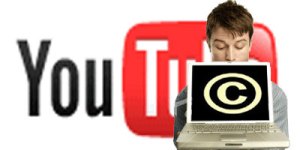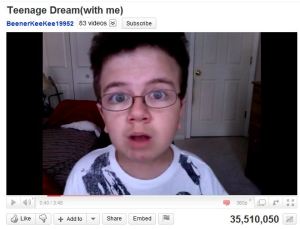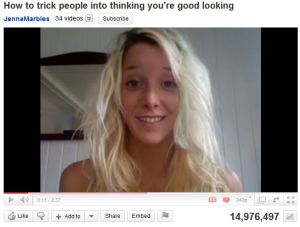 If you’ve kept up with my blog posts and YouTube videos, you’ve probably noticed the recurring theme of copyright infringement on YouTube.
If you’ve kept up with my blog posts and YouTube videos, you’ve probably noticed the recurring theme of copyright infringement on YouTube.
Let’s say you’re a vlogger hoping to go “viral” on YouTube with your videos, but you use copyrighted music in the background of your videos. What could happen?
- In the best case scenario, YouTube will do nothing to your video, and run advertisements in the video in which the payments do directly to the record label. For someone hoping to make money off of their YouTube videos, this option is not ideal. For example, I’ve posted one video in which I used Elton John’s “Honky Cat” as my background music, and have yet to be contacted from the site about this copyright issue.
- In the worst case scenario, YouTube has the authority to remove any/all of the audio from your videos or just remove the video entirely.
If you want to add a popular copyrighted track to your videos the legal way, there are several tedious (and expensive) steps to take. If I wanted to legally use “Honky Cat” in the video of my cat doing cute things, I would have to purchase mechanical rights, public performance royalties, synchronization and transcription rights, publishing rights, neighboring rights, and master use rights. At this point, my wallet will have died from sheer exhaustion!
Of course, this doesn’t mean you have to forego music entirely for your videos – there are plenty of avenues for selecting royalty-free music that is perfectly legal for YouTube. Creative Commons-licensed music can be found easily and used at no fee to the video creator. However, Creative Commons is not to be confused with “public domain,” and there are restrictions.

For example, if you are planning to use music in a video for commercial works and/or you’re planning on making money off of the video, you cannot use a Creative Commons-licensed song without making a separate leasing agreement with the artist or author of the track. That individual may choose to charge you for use of the song, or not allow it to be used at all.
So aside from Creative Commons, what other royalty-free music options do you have?
Incompetech is a great option for finding royalty-free music. It offers a wide variety of royalty free music for use in film and video projects at a good quality and low price. The only thing stipulation is that they require attribution – openly giving credit to the person who created the work. There is a $5 suggested donation, but for YouTubers with a small or non-existent budget, this is probably the best option.
Check out the video below for instructions on how to use Incompetech-provided music for YouTube.
To learn about more options for attaining royalty-free music, check out this blog post.


